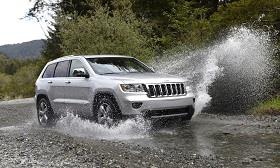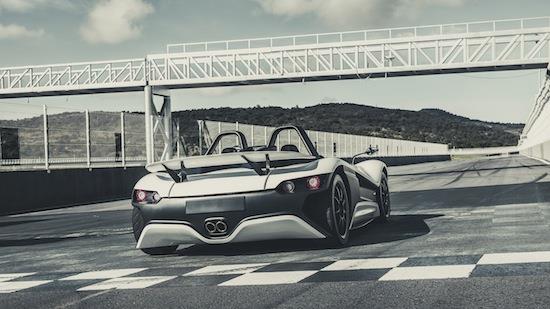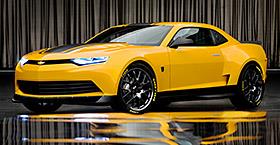Chrysler Group may have to share with Nissan Motor Co. the stylish chrome capital C and black block letter Turbo Diesel logo that has adorned Ram heavy-duty pickups for nearly a quarter century. It was unclear today if there will be marketing implications to Nissan using the Cummins name on a competitive truck.
Nissan announced earlier today that its Titan pickup will get a Cummins turbodiesel in the 2015 calendar year. "We will definitely leverage the Cummins brand name," said Nissan spokesman Dan Bedore.
Cummins has been the sole supplier of diesel engines for Chrysler's Ram pickup since 1989 -- and the Cummins name is seen as a key reason why many customers buy the truck. The Cummins diesel engine has a reputation for long life, low maintenance and good fuel economy while towing heavy loads.
The Ram with a Cummins diesel is rated at 850 pounds-feet of torque and can tow an industry-best 30,000 pounds. Silver Cummins Turbo Diesel badges are attached to the fenders of Ram trucks with the engine. Chrysler officials would not comment on Nissan's deal with Cummins or whether the name on a competitor's truck could hurt Ram's sales or dilute the brand's exclusivity.
Ram spokesman Nick Cappa said buyers associate the Cummins engine with ability to tow and haul huge loads. "People buy heavy-duty trucks for their capability, and that's what we deliver," he said.
The Cummins engine Chrysler uses in the Ram is a 6.7-liter inline-six, while Nissan's Cummins diesel is a 5.0-liter V8 based on a different design. Chrysler uses the Cummins engine only in heavy-duty versions of the Ram. Nissan doesn't offer a heavy-duty version of the Titan, and the Cummins engine will provide greater towing ability and higher fuel economy than the Titan's gasoline V8.
Later this year, Ram will offer a V6 turbodiesel from VM Motori in the light-duty or 1500 versions of the Ram.
Working on logo
Cummins spokesman Dave Groggin said the company will work with Nissan on the logo, but he said it is too early to say if there will be any differences. "It's our logo, not a Ram logo. We worked with Ram on the logo and we'll work with Nissan," he said. "Clearly both automakers see value having our logo on the side of their vehicles."
Details of the next Mississippi-built Titan, which hasn't been fully revamped since its 2003 introduction, aren't being disclosed at this time, the company said.
"Truck owners told us there's a demand for the performance and torque of a diesel in a capable truck that doesn't require the jump up to a heavy-duty commercial pickup," Fred Diaz, vice president for North American Nissan sales and marketing, said in the statement. "There is no question that the new Titan will turn heads."
Missed expectations
Nissan missed expectations a decade ago with Japan's first pickup that appeared to match the size and power of the trucks that are a cornerstone of U.S. sales for General Motors Co., Ford Motor Co. and Chrysler. Nissan never met an initial target of selling 100,000 Titans a year, and delivered just 10,020 this year through July, a sixth the volume of Toyota Motor Corp.'s Tundra, and a fraction of the sales of Ford's F-Series, GM's Silverado and Chrysler's Ram pickups.
Titan sales fell 42 percent in July compared with the same month last year and have dropped 21 percent for the first seven months of the year, according to the Automotive News data center. Nissan's total U.S. sales have risen 9 percent over the same seven months.
U.S. full-size pickup sales jumped 23 percent this year through July, according to Autodata Corp., as an improving economy encourages buyers to replace their aging trucks. Large pickups account for a majority of earnings for U.S. automakers, according to Morgan Stanley.
The diesel engines will be built at a Cummins factory in Columbus, Ind., for installation at Nissan's Canton, Miss., plant.
Diesel appeal
Owners of large pickups are among the most loyal to GM, Ford and Chrysler. Nissan hired Diaz, 47, earlier this year after the executive headed Chrysler's Ram brand and Mexican unit. Toyota, which is readying a revamped Tundra, has no plans to add a diesel powertrain at this time, said Bill Fay, the company's group vice president for U.S. sales, in an interview in San Diego.
Karl Brauer, senior analyst at Kelley Blue Book, said fuel efficiency requirements continue to push automakers to consider new, alternative drivetrain solutions. "By offering a Cummins turbo diesel in the next Titan, Nissan is increasing both performance and fuel efficiency for its truck just as the segment is seeing rapid growth," he said in a statement. "Customer loyalty among truck buyers remains a barrier to brands like Nissan and Toyota, but a 5.0-liter turbo diesel, offering approximately 550 pound-feet of torque, could change truck buyers' consideration list when the next Titan hits showrooms next year."
The diesel engines will be built at a Cummins factory in Columbus, Ind., for installation at Nissan's Canton, Miss., plant. Nissan didn't provide investment figures or say whether additional U.S. manufacturing jobs would result from the project. Cummins is also based in Columbus, south of Indianapolis. Nissan's North American unit is based near Nashville, Tenn.
Bloomberg contributed to this report
(Nissan's deal with Cummins could have marketing implications for Ram originally appeared on Automotive News.)
-- Richard Truett
Content provided by Autoweek.
Get more Car News from Autoweek.
Get the latest Car Reviews from Autoweek.


 Even though some car enthusiasts lament the creep of technology into cars, electronics replacing mechanical parts are nothing new. Think of power steering and how it has helped made driving easier and safer for decades.
Even though some car enthusiasts lament the creep of technology into cars, electronics replacing mechanical parts are nothing new. Think of power steering and how it has helped made driving easier and safer for decades.


 You would think that states such as California, which has the highest gas taxes in the country, and New York, with sky-high prices for parking in the metropolitan area, would be the most expensive places to own and operate a car.
You would think that states such as California, which has the highest gas taxes in the country, and New York, with sky-high prices for parking in the metropolitan area, would be the most expensive places to own and operate a car.

 Mexico is emerging as a big player in the automotive manufacturing industry. Ford, Mazda, Volkswagen, and Toyota are currently building vehicles there; they’ll be joined in the coming years by Honda and Nissan, as well asVolkswagen’s second Mexican plant, which will produce Audis.
Mexico is emerging as a big player in the automotive manufacturing industry. Ford, Mazda, Volkswagen, and Toyota are currently building vehicles there; they’ll be joined in the coming years by Honda and Nissan, as well asVolkswagen’s second Mexican plant, which will produce Audis. 




 Nissan
Nissan


 With cloud-connected smartphone integration and in-dash applications getting a lot of attention, car stereos have become almost an afterthought. But we are living in what I consider the golden age of factory car stereos.
With cloud-connected smartphone integration and in-dash applications getting a lot of attention, car stereos have become almost an afterthought. But we are living in what I consider the golden age of factory car stereos. Toyota
Toyota




